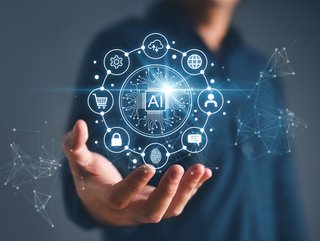Harnessing the power of GenAI while mitigating risks

The rapid advancements in generative AI (GenAI) have captured the attention of governments worldwide, with many organisations eager to leverage this powerful technology to address complex challenges and improve public services.
However, the intricacies and challenges associated with GenAI implementation could potentially hinder the ability of government agencies to effectively adopt and utilise this transformative technology.
GenAI's economic impact is projected to be staggering. McKinsey & Company estimates that GenAI could add US$2.6tn to US$4.4tn to the global economy annually by 2030. This transformative potential spans various industries, including manufacturing, finance, healthcare, retail and a number of creative industries.
Addressing the potential risks of GenAI
GenAI poses significant risks to government agencies, including the misuse of political propaganda, the compromising of national security, the leakage of confidential data, the dissemination of inaccurate information, the lack of transparency, the risk of cybersecurity attacks, and the erosion of public trust.
Misuse for political propaganda
GenAI's ability to generate and manipulate information makes it susceptible to misuse for political purposes, such as creating fake news or spreading disinformation to influence public opinion or sway elections.
Compromise of national security
GenAI's power to generate realistic fake content could be exploited to create deepfakes or manipulate sensitive information, potentially compromising national security and security measures.
Leakage of confidential data
The vast amount of data required to train GenAI models could pose a significant security risk if confidential government information is inadvertently introduced into the training process, leading to data breaches or leaks.
Dissemination of inaccurate information
GenAI's ability to generate plausible text and images could be used to spread misinformation or fabricate false evidence, potentially undermining public trust in government institutions.
Lack of transparency
GenAI's decision-making processes often remain opaque, making it difficult to understand the underlying logic of the models and assess the accuracy of their outputs. This lack of transparency could raise concerns about accountability and misuse.
Risk of cybersecurity attacks
GenAI's reliance on complex algorithms and large datasets makes it vulnerable to cyberattacks, potentially allowing malicious actors to manipulate or control GenAI models.
Erosion of public trust
The misuse of GenAI or the dissemination of inaccurate information could erode public trust in government agencies and their ability to provide reliable and trustworthy services.
To address these risks, governments are developing frameworks of regulations and policies, conducting awareness programs, and providing guidance on safe and ethical use.
Developing a national GenAI foundation model
Developing foundation models for GenAI is a complex and resource-intensive process. Governments often lack the talent, computing power, and expertise to build and manage these models effectively. As a result, many governments are choosing to partner with private sector companies that specialise in GenAI to access and customise their models for their specific needs.
Foundation models are the cornerstone of GenAI, providing the underlying infrastructure for a wide range of applications. These models require extensive computational resources, specialised expertise, and access to vast amounts of data to train and maintain, and governments that lack these resources and capabilities, make it challenging to develop and manage foundation models independently.
According to McKinsey’s article, public sector agencies that are just beginning their venture into GenAI should start small, define the risk posture, identify and prioritise use cases, select the underlying model, and ensure the necessary skills and roles are available. They should also develop GenAI apps jointly with end users, keep humans in the loop, design a comprehensive communication plan, and scale up.
******
Make sure you check out the latest edition of AI Magazine and also sign up to our global conference series - Tech & AI LIVE 2024
******
AI Magazine is a BizClik brand






